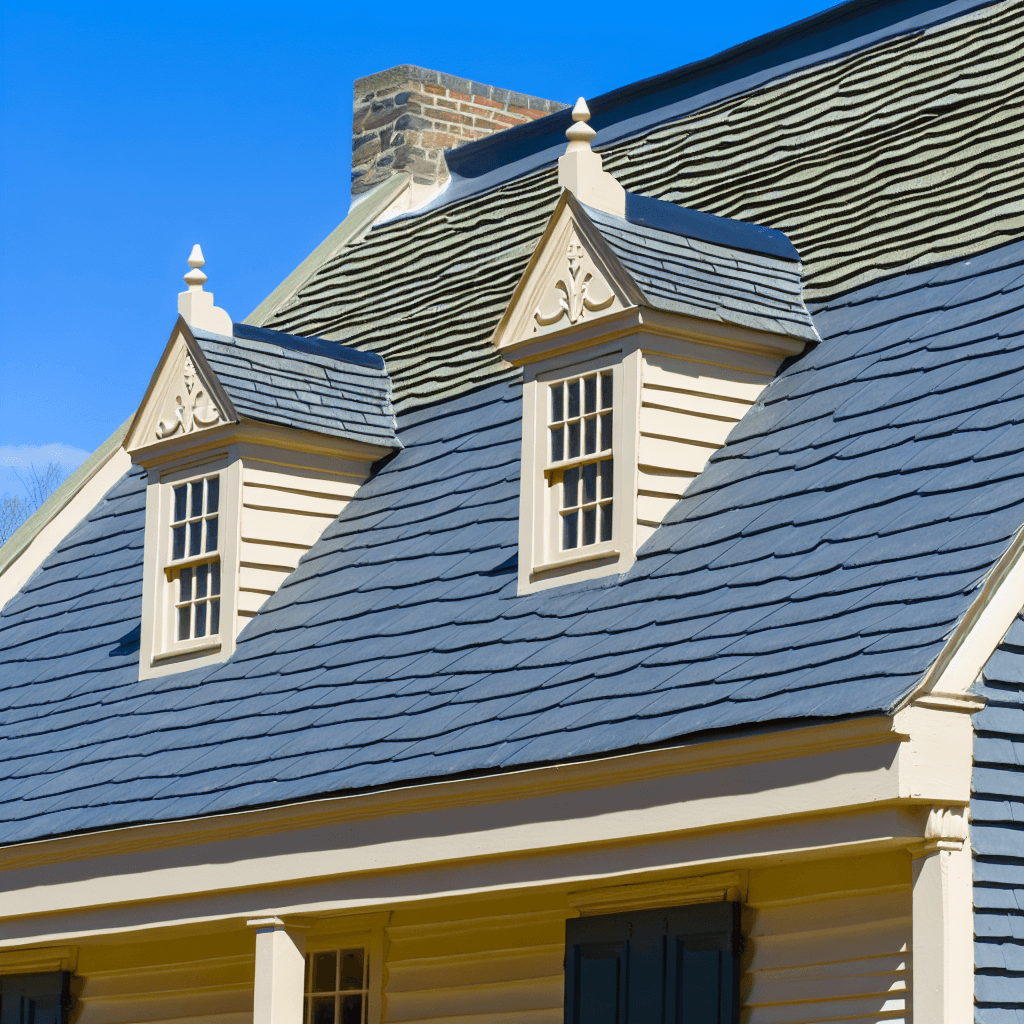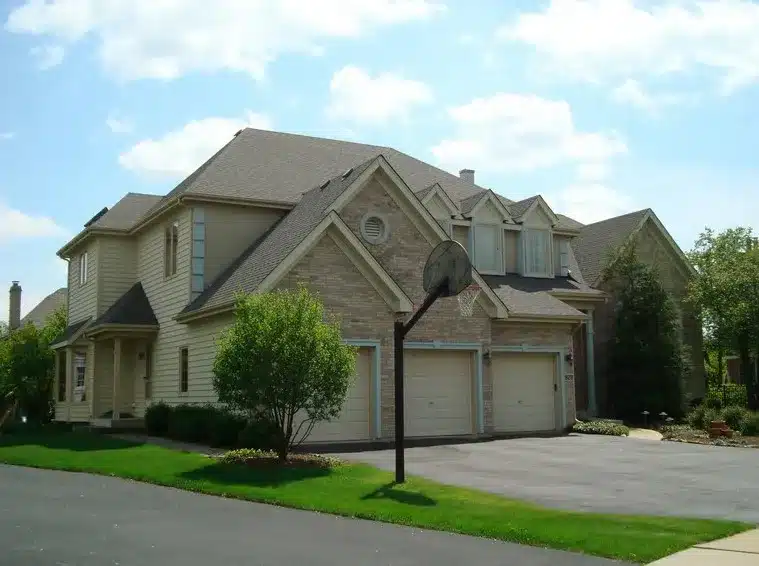• Learn the essential steps to restoring historic home roofing, preserving architectural integrity and value
• Discover expert tips and best materials recommended for authentic historic roof renovation
• Uncover why professional guidance ensures successful restoration and maintenance of your heritage home roof
Identifying Roofing Issues in Historic Homes
Before undertaking any restorative work, it’s essential to pinpoint exactly what needs fixing on your historic home’s roof. Look above and notice if there are any missing shingles or tiles, which are not only cosmetically unappealing but may lead to more significant structural issues if left unaddressed. It’s equally important to keep an eye out for signs of water infiltration, such as stains or streaks on the ceilings inside your home. These could indicate a compromised roofing system that demands immediate attention to prevent interior damage.
Assessing Roof Damage
Much can be learned about the state of your roof just by observing the way it interacts with the natural elements. If you see pooled water or a sagging roofline after a rainstorm, these are clear indicators of structural wear and potential rot in the roofing framework. Pay special attention to the areas around chimneys and vents, as these are common points for leaks to develop. Promptly identifying these warning signs can go a long way in safeguarding the integrity and character of your historic residence.
Preparing for Restoration
Once you’ve recognized the tell-tale signs of deterioration, it’s time to plot out a clear course for restoration. It’s not just about aesthetics; your home’s roof is its first line of defense against the elements, so be thorough and considerate in your approach. Prepare for a deep dive into historical records and materials that will ensure your restoration efforts maintain the home’s original grandeur. After all, each detail of your roofing—from the color of tiles to the slope of the eaves—tells a story, and it’s your job to preserve it for future generations to appreciate.
Remember, careful assessment of your historic home’s roofing and knowledge of preceding damage are crucial in planning a successful restoration, setting the stage for the detailed guide to follow.
Choosing the Appropriate Restoration Materials
Selecting the right materials is pivotal for the restoration of your historic home’s roof. It requires a delicate balance between historical accuracy and the advantages of modern technology. As you select tiles or shingles, consider not only the visual compatibility with the original design but also the durability and longevity these materials bring. While some traditional materials may still be available, alternatives that mimic the look while offering better performance can be a wise choice for long-term preservation.
Securing Expert Assistance
The restoration of a historic roof is not a DIY project; it calls for the expertise of seasoned professionals. By opting for specialists who are well-versed in both historical craftsmanship and contemporary standards, you ensure that the restoration work is carried out with due respect to original methods. For guidance on quality craftsmanship that stands the test of time, consider consulting with Owen Enterprises Inc., experts who combine traditional techniques with modern proficiency. Remember, the key to a successful restoration lies in the hands where tradition meets expertise.
Step 1: Assess the Condition of Your Roof
Begin by carefully assessing the current state of your historic home’s roofing. Look for signs of damage such as missing tiles, leaks, or structural wear. Accurate diagnosis is key in planning a suitable restoration process.
Step 2: Research Historical Accuracy
Investigate the materials and methods originally used on your roof. Aspects such as the color, shape, and texture of roofing tiles should respect the historic character. Local historical societies or preservation commissions may offer valuable insights.
Step 3: Choose the Right Materials
Select materials that match the historic quality while considering modern improvements for longevity and weather resistance. Ensure any substitutions still maintain the integrity and appearance of the historic design.
Step 4: Secure Necessary Permits
Check with Hinsdale, IL authorities for any required permits when restoring a historic property. Compliance with local regulations is essential to avoid penalties and to ensure the continued protection of the property’s historical status.
Step 5: Plan for Weather and Timing
Since the restoration will take place in fall, plan the project considering the weather patterns. Moisture and temperature can affect installation and curing processes, so schedule the work during a period with mild and dry weather.
Step 6: Hire Skilled Roofing Professionals
Partner with roofing contractors who have experience in historic home restoration. They should have a portfolio that showcases their previous historic projects and an understanding of traditional roofing techniques.
Step 7: Focus on Preservation and Maintenance
Discuss preservation-focused solutions with the experts, like using reversible techniques or materials that can be easily replaced or upgraded in the future, ensuring the roof’s long-term health without compromising its historic character.
Step 8: Regular Monitoring and Upkeep
After the restoration, engage in regular monitoring and maintenance of the roof to prevent future deterioration. Ongoing care will extend the life of the restoration and protect the overall value and authenticity of your historic home.
Common DIY Restoration Mistakes to Avoid
When embarking on the endeavor of restoring the roofing of a historic home, the enthusiasm to preserve your dwelling’s legacy may lead to overlooking critical details. It’s vital to recognize that without the proper know-how, DIY efforts can end up causing more harm than good to your historic property. Let’s look at some frequent missteps homeowners make and discuss how to avoid them to ensure your roofing restoration is a resounding success.
Mistake 1: Ignoring the Need for Thorough Inspection
Homeowners often skip the crucial step of a meticulous roof inspection, leading to unforeseen complications during restoration. To prevent this, take time to conduct a comprehensive review of your roof to pinpoint all potential issues.
Mistake 2: Inadequate Research on Historical Materials and Techniques
Restoration demands a faithful adherence to the original materials and construction methods; neglecting this can result in an inauthentic finish. Immerse yourself in historical research or consult experts to ensure accuracy in your restoration materials and techniques.
Mistake 3: Using Modern Materials That Compromise Historical Integrity
In efforts to modernize, some may select materials that clash with the building’s period authenticity. To avoid this, opt for materials that offer a blend of historical accuracy and modern resilience, without compromising the aesthetic.
Mistake 4: Overlooking Local Regulations and Permit Requirements
One might forget to secure the necessary permits before commencing work, risking legal and financial repercussions. Make sure to familiarize yourself with Hinsdale’s regulations and obtain all required permits to maintain compliance.
Mistake 5: Poor Timing with Weather Conditions
Beginning a project without considering the season’s weather patterns can lead to delays and damage. Schedule your restoration during dry, mild weather to optimize the conditions for roofing work.
Mistake 6: Hiring Contractors Without Proper Historical Restoration Experience
Selecting a contractor without the right experience in historic restorations can lead to improper repairs. Ensure that the professionals you hire have a proven track record in historic home roofing, backed by a solid portfolio.
Mistake 7: Neglecting Preservation and Maintenance Post-Restoration
Post-restoration, some may neglect continuous maintenance, which is essential for preserving the roof’s condition. Implement a regular maintenance schedule to safeguard the roof’s longevity and historic value.
Remember, avoiding these common errors by planning thoroughly can ensure that your historic home roofing restoration honors the past while securing the future.
Securing Necessary Restoration Permits
Before you make the first move in the physical restoration of your historic home’s roof, ensuring legal compliance is a must. Obtaining the right permits safeguards your restoration efforts and ensures that all modifications are up to code. Engaging with local Hinsdale authorities early on will streamline the process and help avoid any regulatory hiccups down the line.
Planning for Fall Weather Conditions
Restoration in the fall brings specific challenges and advantages. Moderate temperatures create the perfect environment for roofing materials to set and cure, while avoiding the extreme conditions of winter. To minimize weather-related risks, carefully time your project and utilize the expertise of Owen Enterprises Inc., to ensure the best outcomes for your historic home roofing restoration.






